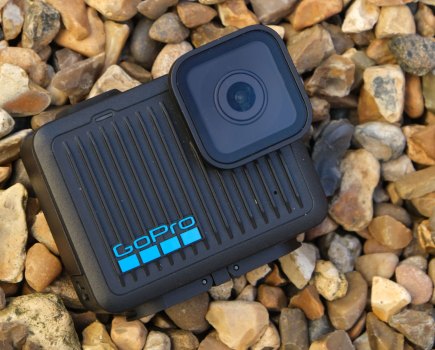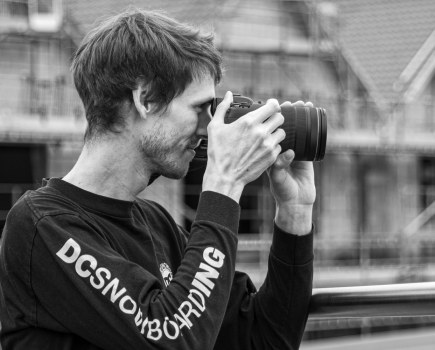Advertising feature
Canon has been pushing the boundaries of autofocus performance from the beginning and its latest innovations has made photographing challenging subjects like fast moving wildlife and other speedy subjects accessible to everyone.
Over the years the camera manufacturers have spent a great deal of time and money developing and refining autofocus (AF) and now it’s so good that we expect perfection every time.
As with many aspects of imaging technology including autofocus it has been Canon leading the way. Its journey started many years ago with the milestone Canon EOS 650, a SLR camera that revolutionised the world of photography with its accurate, fast and sensitive AF skills.
In the intervening years Canon continued to innovate its EOS EF system taking it into the digital age with a key moment being the introduction just over a decade ago of its Dual Pixel CMOS AF sensor in the EOS 70D, which had 19 cross-type AF sensors for a great tracking performance.
In the Dual Pixel CMOS AF sensor, each pixel comprises two photodiodes that records light intensity and brightness independently and the signals from each are compared by the camera’s DIGIC processor to give greater focusing accuracy, smoothness and reliability.
Of course, when Canon introduced its EOS RF mirrorless system existing DSLR technologies were transferred across including the Dual Pixel CMOS AF and the new system allowed further advances.
Benefitting from the opportunities provided by the ground-breaking EOS RF mount with its shorter back focus, made possible by the reflex mirror-free design, and the use of 12 contact pins for super-fast camera to lens communication, Canon’s designers intensified their pursuit for even better AF performance.

The arrival of Dual Pixel CMOS AF II
Canon carried on pushing forward and in 2020 the EOS R5 and EOS R6 came out equipped with the Dual Pixel CMOS AF II sensor. The new unit supports EOS iTR AFX, Canon’s subject detect and focus tracking technology that employs deep learning for superior, more reliable autofocusing performance in video and still photography.
Delivering sharp pictures of everyday static or slow moving scenes is well within the compass of every AF system, but it’s a completely different challenge dealing with rapidly moving small subjects.
With Canon’s intelligent AF system you get very competent subject detect, AI servo AF and eye detect tracking. The technology arrived first in high end models such as the EOS R5 and EOS R3, but it has cascaded down to more modestly priced cameras such as the EOS R7 and EOS R10, so photographers of all levels can benefit.
Furthermore, with the very effective subject detect it means photographers who aren’t experienced in a particular genre of photography such as wildlife can now get great photographs thanks to the camera’s skills.
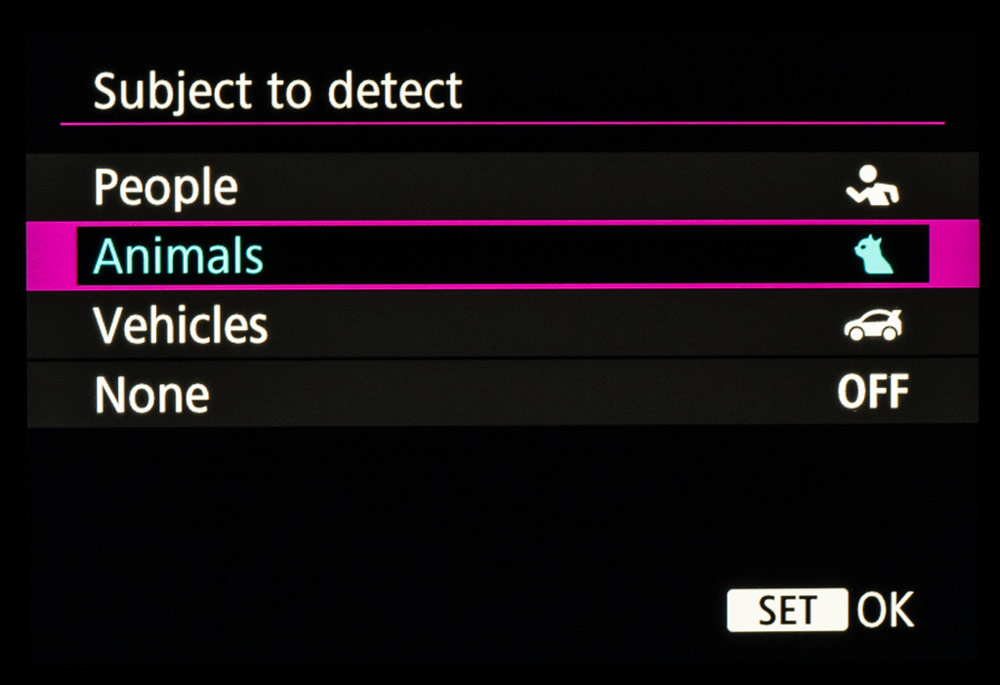
Subject detection options
Subject detect options include people, vehicles and animals. With its deep learning ability, animal detect can determine whether the subject is a cat, a dog or birds, and eye detect can even latch onto the eyes of small birds.
Eye detect is not just highly sensitive, it also works in low lighting conditions and tracks tenaciously, so even when obstacles such a tree trunk or fence post comes between you and the subject, the system sticks with the subject, even at high frame rates.
To develop an animal detect AF system that works obviously demands a great deal of work and a vast amount of data, especially with a subject type as diverse as birds.
They come in all sizes, shapes and colours, from tiny creatures such a wrens and sparrows to raptors, sea birds and large species like pelicans which have a wing span of over three metres.
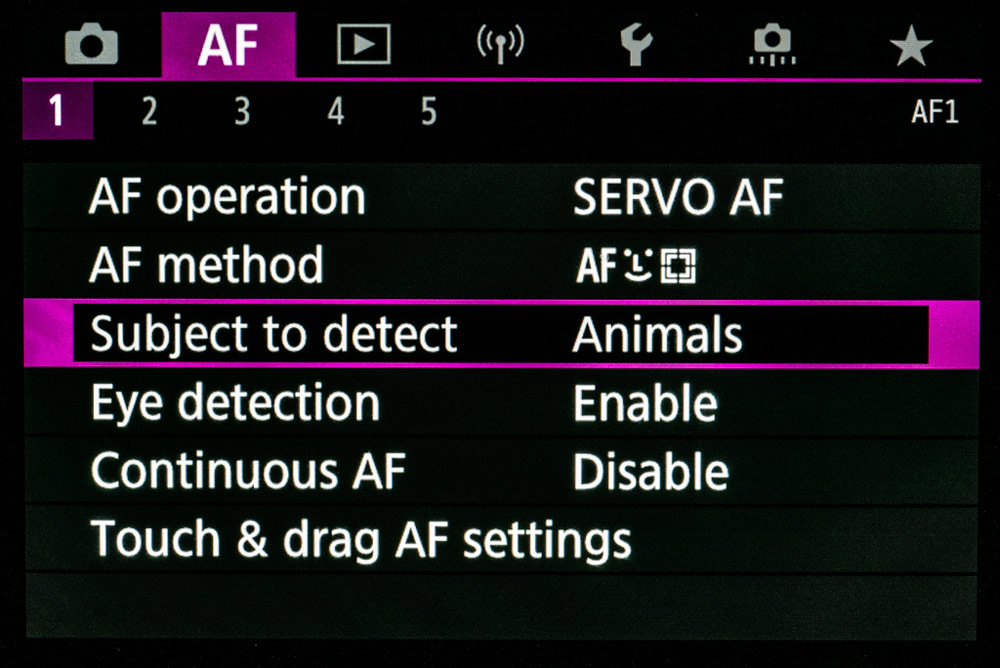
When the Face detect AF mode is selected, it works across the whole frame to detect the subject. So the bird could be bottom right, top left or wherever in the frame and the subject detect system will try to acquire it and once acquired, will track it across the frame.
Of course, birds present an extra challenge too: they fly and all do it differently. Some species glide relatively slowly in a predictable trajectory while others zip around in an unpredictable manner, which makes birds in flight a tough test for any AF tracking system.
Canon’s Dual Pixel CMOS AF II technology uses every pixel in the sensor which means the AF can track the subject wherever it sits in the centre or at the edge of the frame.The camera’s image processor also scans the frame up to 12 times every second to ensure focus stays locked on the subject. With the long telephoto lenses that are essential for this subject and the need to use wide lens apertures to maintain high shutter speeds, it means depth-of-field is shallow with no room for error.
Subject detection AF on test
To check out Canon’s subject detect skills we took an EOS R5 to Lake Kerkini in northern Greece, an artificial lake and leading nature reserve. Early January to March is great time to photograph pelicans in their breeding plumage and these impressive birds attract photographers and birders from all over.
Along with the EOS R5 we took along a selection of Canon RF lenses, namely the RF 14-35mm F4L IS USM, RF 24-105mm F4L IS USM, RF 70-200mm F4L IS USM and RF 100-500mm F4.5-7.1L IS USM. While a long telephoto lens was required for shooting the pelicans from the shore, much shorter focal lengths were needed for working from a boat.
Actually, on the water with telephotos there’s the risk of having too much lens and over the four days, the RF 24-105mm F4L IS USM standard zoom proved the most useful lens.


The majority of images were shot with the Canon EOS R5, set to continuous shooting at 20fps with the electronic shutter, switching to the mechanical shutter for some comparison images. The fast readout of the electronic shutter avoided any issues with rolling shutter while panning with the flying birds.
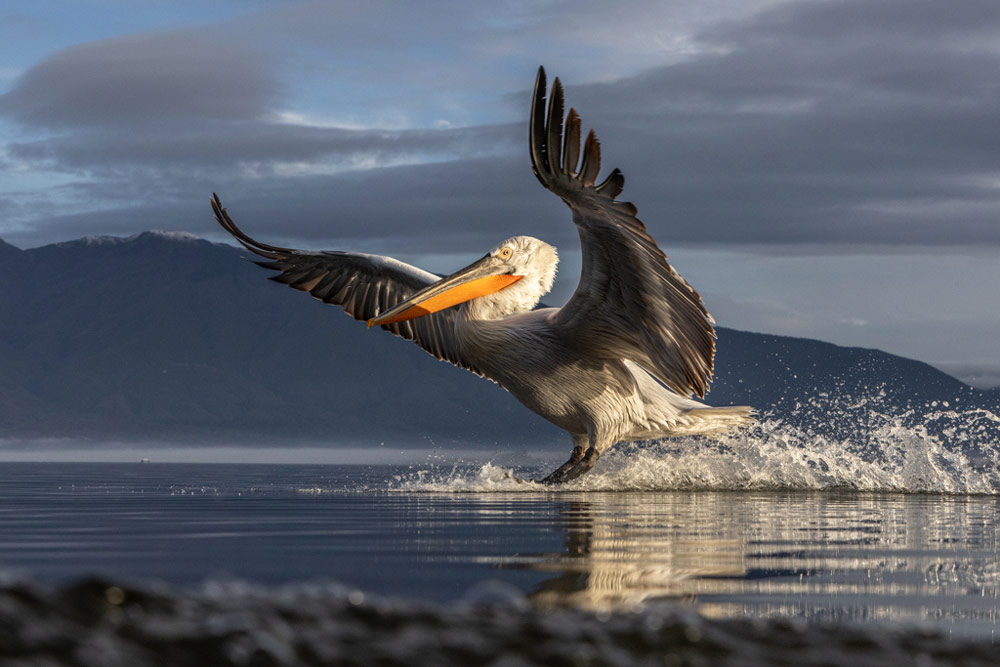
The only occasional hiccup experienced was when hanging over the side of the boat as it cruised along. With the camera fitted with the RF 14-35mm F4L IS USM or RF 24-105mm F4L IS USM and held very close to the water’s surface the camera sometimes tried to focus on the splashing water.
The camera and lens also got wet several times but its weather-sealing meant a quick towelling down and shooting could continue.
Overall, autofocus performance with the camera set to animal detect, eye detect and servo AF did a great job giving spot on results much of the time. Whether tracking a bird from distance or dealing with a bird suddenly entering the frame the Canon kit delivered great results consistently and reliably.
Further reading
Best Canon mirrorless cameras in 2024
Now’s the time to discover Canon’s RF mount
.





